Belgium’s Ancient Capital, Engraved with History
2021/7/2
Zeebrugge (Belgium)
In the late Middle Ages, the Hanseatic League prospered around the Baltic and North Seas. The region of Flanders, in northern Belgium, developed an industry based on woolen textiles. The city of Bruges in particular became a crucial trade base, so important that it was considered one of the four biggest trade centers of the Hanseatic League. Peace Boat visits Zeebrugge, which means “Bridge over the Sea.” Setting out from this port city, we head to Bruges, the capital of Flanders, and the ancient city of Ghent, a World Heritage town that still retains the glory of the Hanseatic League.

The Medieval City of Water
Bruges is a medieval water city, sometimes called the “Venice of the north.” this name comes from its complex network of canals that extend all around the city, with more than 50 bridges. Known as one of the most historic cities in Europe, its origins date all the way back to the 9th century. By the 13th and 14th centuries it had become one of the most important trade ports in Western Europe, and was an important centre of the Hanseatic League. The canals were closed in the 15th century and Bruges has lost its functions as an industrial city, but the medieval buildings have been preserved. This led the Old Town of Bruges to be registered as a UNESCO World Heritage Site.
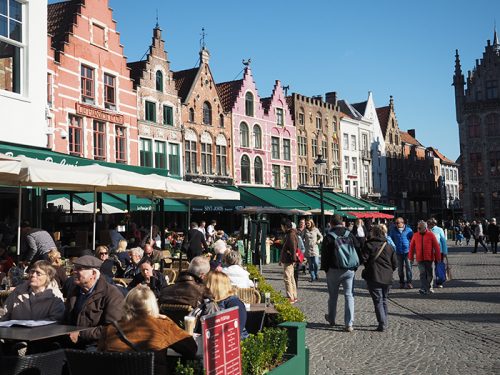
In the heart of the historic centre, the Markt (market square) in the Historical District is lined with jagged triangular roofs, a characteristic of the Hanseatic merchant guildhouses. Also here is the neo-Gothic style Provinciaal Hof (Province Court), and an 83 meter tall belfry, one of the UNESCO World Heritage registered Belfries of Belgium and France. From the belfry’s observation deck you can enjoy a beautiful view of the canal-lined town. To the south-west of the Markt is the Beguinage, also a World Heritage Site as part of the group of Flemish Beguinages. The Old Town of Bruges is a World Heritage Site that hosts a further two World Heritage Sites within.
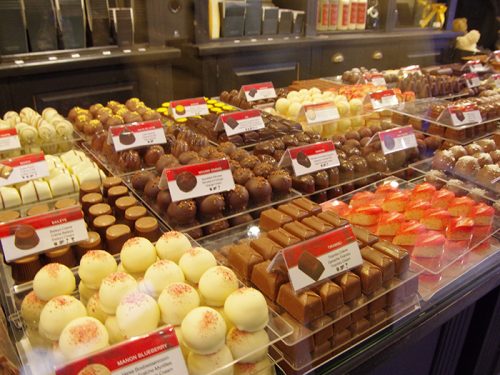
Tasting Belgian Delicacies
Bruges has another face – the City of Chocolate. Strolling around town you will see many chocolate stores, from long-running traditional ones to cozy family-run shops, and even some where you can see the production process. As the town retains its medieval looks, the stores have an elegant atmosphere. Chocolates are lined up in the window shelves like luxurious treasures. Visiting different shops in a quest to find your favorite chocolate is another way to enjoy your time in Bruges.
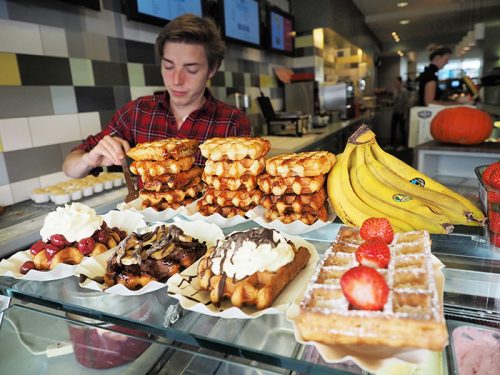
Once you are tired from walking, it is time to head to a café or restaurant in a renovated guild house. A hot chocolate and Belgian waffle are the best choice when visiting Belgium. Another thing you must do is try Belgium traditional gourmet at a restaurant. A representative seafood dish of Belgium is mussels from the North Sea. In particular, steamed mussels with frites (fried potatoes) are a popular combination. And to drink, don’t pass up the chance to try a flavorsome Belgian beer!
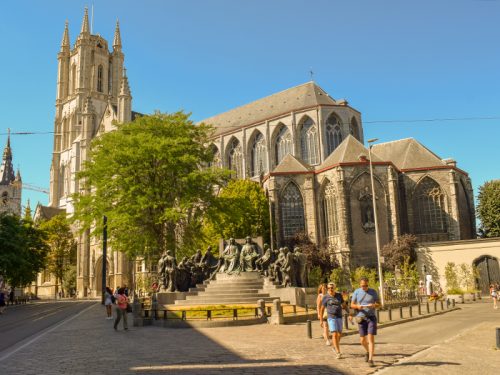
Ghent, A Flowery City with the Fragrance of History
Ghent, the third biggest city in Belgium, is known as the “City of Flowers” for its beautiful gardens and flowers adorning all corners of the city. Ghent preserves a great influence from the Hanseatic League times, and the many guild houses and historical buildings in Sint-Baafsplein (Saint Bravo’s Square) and along the Leie river tell the story of the city’s past glory. Here you can also find Saint Bravo’s Cathedral, one of Ghent’s most important landmarks. Its magnificent facade, exquisite religious paintings, and statues make the cathedral seem like a museum. Of these items, the Ghent Altarpiece “Adoration of the Mystic Lamb” by the Van Eyck brothers is a masterpiece representative of early Flemish painting.
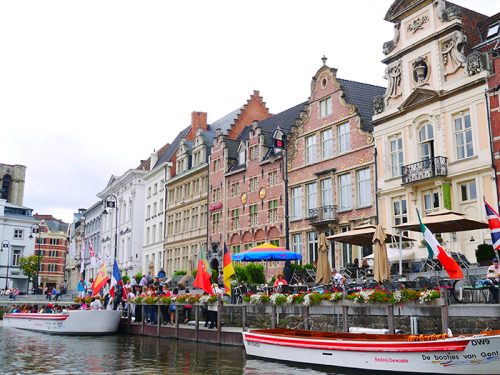
As a city leading in ecological urban design, many public buildings in Ghent have been modified to reduce energy consumption or use renewable energy sources. Interestingly, many abandoned buildings such as old brick factories and shipyards have been renovated as hotels and shops, retaining their antique facades and old streetscapes while bringing new life to the town. In order to reduce meat and diary consumption, every Thursday since 2009 has been designated as a Vegetarian Day. In Ghent you can see a glimpse of the future, where historical sights blend in harmony with progressive initiatives.
PHOTO: PEACEBOAT, Okada Keita, Mizumoto Shunya
